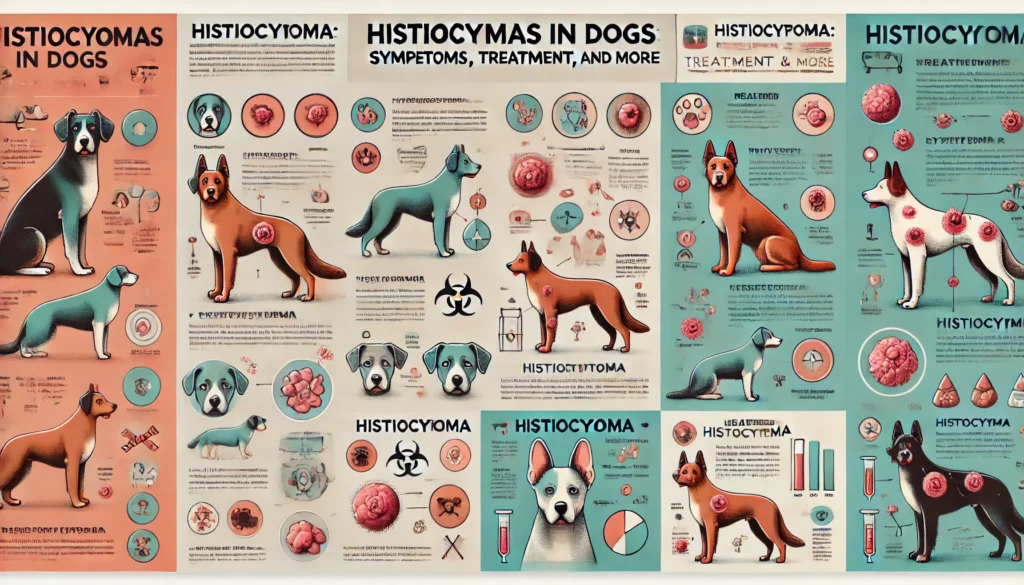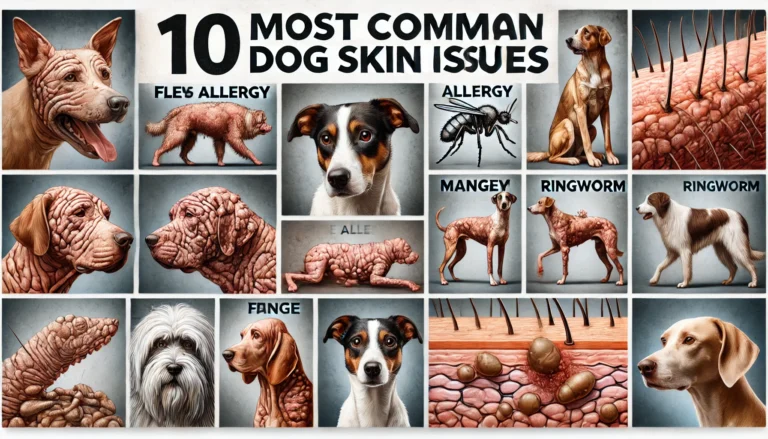Histiocytomas in Dogs: Symptoms, Better Treatment, and More

Introduction to Histiocytomas in Dogs
Histiocytomas are benign skin tumors that are quite common in dogs, particularly affecting younger ones and certain breeds like Boxers, Bulldogs, and Scottish Terriers. These tumors, while generally not harmful, can cause concern due to their appearance and rapid growth. Understanding the symptoms, effective treatments, and proper management of histiocytomas can help dog owners ensure their pet’s health and comfort.
What Are Histiocytomas?
Histiocytomas originate from Langerhans cells, part of the immune system’s components within the skin. They are characterized by small, firm, round nodules that typically appear on a dog’s head, neck, limbs, and other less hairy areas. These growths are usually:
- Less than 2.5 cm in diameter
- Reddish and may look like a small button
- Bald and possibly ulcerated
- Not typically painful or itchy, which means dogs may not exhibit discomfort
Despite their benign nature, it’s crucial for any new growths to be examined by a veterinarian to exclude more serious conditions like mast cell tumors or melanomas.
Symptoms of Histiocytomas
The primary indication of a histiocytoma is a solitary, quickly developing nodule that might initially alarm an owner. These tumors can also show as multiple nodules, which require immediate veterinary attention to rule out other issues. Occasionally, if a tumor becomes ulcerated, it might bother the dog, leading them to scratch or bite at it, risking infection.
Diagnosing Histiocytomas
Veterinarians typically diagnose these tumors through a combination of physical examination and cytological analysis via fine needle aspiration or biopsy. This step is crucial to distinguish them from other tumors and ensure the appropriate treatment plan. The distinct cellular composition of histiocytomas observed under the microscope confirms the diagnosis.
Treatment Options
Most histiocytomas resolve on their own within a few months; however, intervention may be necessary if they do not regress or if they pose a risk of infection due to ulceration:
Medication: In cases where surgery isn’t suitable, medications may help manage symptoms or shrink the tumors.
Surgical Removal: This is often the go-to solution for persistent or problematic histiocytomas. It’s a straightforward procedure that usually results in a permanent cure.
Cryosurgery: For smaller tumors, cryosurgery using liquid nitrogen can be a non-invasive option to effectively remove the growth.

Better Management and Care
Observing the tumor for changes in size, color, or form is vital. Owners should monitor the tumor regularly and maintain their dog’s overall health through proper diet, exercise, and regular veterinary check-ups. This proactive approach helps support the dog’s immune system and can prevent complications.
Prognosis
The prognosis for dogs with histiocytomas is generally very favorable, with many tumors resolving naturally and those removed surgically rarely recurring. Nonetheless, continuous monitoring and care are advisable to promptly address any changes or complications professional intervention.
do you know
Dog’s Lump Is Cancerous, Discovering a lump on your dog can trigger a flood of concern and questions.
Conclusion
While histiocytomas in dogs are usually benign and often resolve without treatment, understanding their nature and symptoms is essential for effective management and ensuring they are not mistaken for more aggressive conditions. Regular veterinary visits and vigilant observation at home are key to managing these tumors, allowing for a quick response should the growth not resolve naturally or if complications arise.rinarian.
How do you treat histiocytoma in dogs?
Histiocytomas in dogs are typically treated by monitoring for spontaneous regression, which is common, or by surgical removal if the tumor is bothersome or does not resolve on its own.
Can Histiocytomas in Dogs turn into cancer?
Histiocytomas are benign and do not turn into cancer. However, they can be mistaken for more malignant tumors, so accurate diagnosis is important.
Do Histiocytomas in Dogs go away on their own?
Yes, histiocytomas often regress spontaneously within a few months without any treatment, especially in younger dogs.
What are the symptoms of histiocytosis in dogs?
Symptoms include small, firm, raised, and often red tumors on the skin. They might be ulcerated or not, depending on the individual case.
What are the signs of histiocytoma?
Signs include a solitary, non-painful, rapidly growing, round, and red or pink nodule on the skin, commonly found on the head, limbs, and ears.
What is the most common site of histiocytosis?
In dogs, the most common sites are the head, neck, limbs, and flanks.
What is the diagnostic test for histiocytosis?
The primary diagnostic test is fine needle aspiration, which may be followed by histopathological examination of a biopsy if needed.
What is the marker for histiocytosis?
CD1a is a common immunohistochemical marker used to identify cells involved in histiocytosis.
Is histiocytosis treatable?
Yes, histiocytosis is treatable, primarily through surgical removal of tumors, though many cases may resolve spontaneously without the need for intervention.






